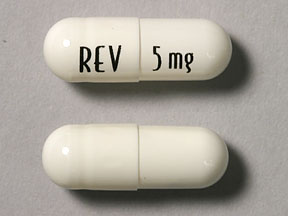
Diagnosed with SMM, SPB, or MGUS?
Learn how you can stall the development of full-blown Multiple Myeloma with evidence-based nutritional and supplementation therapies.
Click the orange button to the right to learn more.
- You are here:
- Home »
- Blog »
- Pre-Myeloma »
- Risk of Progression for Smoldering Multiple Myeloma is Reduced…at what cost?
Risk of Progression for Smoldering Multiple Myeloma is Reduced…at what cost?
“Lenalidomide (Revlimid) induced a 72% reduction in the risk of progression to symptomatic disease in patients with smoldering multiple myeloma at 3 years”
The challenge with pre-myeloma, Monoclonal Gammpathy of Undetermined Significance (MGUS) or Smoldering Multiple Myeloma (SMM), is that newly diagnosed patients are focused on preventing a diagnosis of MM when they should be focused on preventing death from MM. This may sound a bit harsh but let me explain.
First and foremost, I’m sure that Sagar Lonial, MD, FACP, is correct when he says that Revlimid reduces the risk of a diagnosis of full-blown MM for several years. While a diagnosis of MM is difficult, its not the problem for us MMers, is it? Dying from MM is the problem.
Revlimid is one of the, if not the most effective weapons in the newly diagnosed MMer’s arsenal. The challenge all MMers face eventually is multi-drug resistance (MDR). A person’s myeloma will eventually develop resistence to all chemotherapy regimens. Always.
This means that the sooner a newly diagnosed MM begins using Revlimid the sooner his/her MM will develop resistence and the sooner he/she will develop MDR.
The next question to ask if what can a person diagnosed with pre-MM, either MGUS or SMM, do to reduce his/her risk of progression to frank MM? The answer is that there are many evidence-based, non-toxic therapies shown to reduce the risk of pre-MM becoming frank MM including supplementation, nutrition, detox, lifestyle and other therapies.
To learn more about evidence-based, non-toxic therapies to reduce your risk of frank MM, scroll down the page, post a question or comment and I will reply to you ASAP.
Thank you,
David Emerson
- MM Survivor
- MM Cancer Coach
- Director PeopleBeatingCancer
Recommended Reading:
- High Risk Smoldering Multiple Myeloma? To Treat or To Wait?
- Single Plasmacytoma, MGUS or SMM? To treat or watchful waiting?
- Early Chemotherapy does NOT help Smoldering Multiple Myeloma
- MGUS (pre-myeloma) and Kidney Damage
Risk of Progression Reduced With Lenalidomide in Smoldering Multiple Myeloma
“Lenalidomide (Revlimid) induced a 72% reduction in the risk of progression to symptomatic disease in patients with smoldering multiple myeloma at 3 years, according to data from an upcoming presentation of the ECOG E3A06 study at the 2019 ASCO Annual Meeting.
Moreover, the time to develop multiple myeloma was delayed with lenalidomide [2-year progression-free survival (PFS): HR, 0.93; 95% CI, 0.88-0.99) compared with observation (2-year PFS: HR, 0.76; 95% CI, 0.66-0.87).
“It is pretty clear that many of us would argue that early intervention with a prevention strategy – not a treatment strategy – can reduce the risk of conversion to symptomatic myeloma,” Sagar Lonial, MD, FACP, chief medical officer, Winship Cancer Institute of Emory University, said during a presscast held ahead of the meeting.
He added that – because many issues associated with multiple myeloma can result in irreversible morbidity and, at times, mortality – healthcare providers struggle to identify patients at high risk for progression and also how to intervene by risk stratification.
Therefore, in the randomized phase II/III trial, led by the ECOG-ACRIN Cancer Research Group and sponsored by the National Cancer Institute, the researchers evaluated the efficacy and safety of lenalidomide compared with observation in patients with asymptomatic high-risk smoldering multiple myeloma to determine the reduction in risk and 2-year PFS associated with development of symptomatic disease…
“Separating the patients at highest risk, and then demonstrating that that intervention can make a difference, is part of what we were trying to do with this trial,” he added.
In phase II of the trial – the run-in portion, according to Lonial – patients received 25 mg of oral lenalidomide once daily on days 1 through 21 for every 28-day cycle, as well as 325 mg of aspirin on days 1 through 28, until disease progression or unacceptable toxicity.
In phase III, 90 patients in the treatment arm received the same treatment regimen, while 92 patients in the control arm underwent observation until progression to symptomatic myeloma. Patients were stratified by their time from diagnosis of smoldering multiple myeloma…
While the researchers found a 72% reduction in the risk for progression of smoldering multiple myeloma to symptomatic disease with organ damage, they also discovered this benefit was consistent across low-, intermediate-, and high-risk groups – highlighting the potential for future study.
“What is really quite interesting is that each group appeared to benefit almost equally with early intervention with lenalidomide as a single agent, suggesting that while the high-risk group may be the group that we target now, this may be a fertile area for further investigation in the intermediate-risk group as well, which no trial has ever demonstrated benefit for the prevention of smoldering [disease] from developing into symptomatic myeloma,” Lonial said.
In addition, he noted that about 50% of patients had an objective response to lenalidomide in both the phase II and phase II trial. Moreover, in the phase II portion of the study, 78% of the 44 patients enrolled did not progress to myeloma, with a median follow-up of over 5 years.
“With a similar-risk group of patients, one would expect that 50% to 60% of those patients would have converted to myeloma in that same time frame, suggesting that we would have prevented the development of organ damage and symptomatic myeloma in a large fraction of patients – not just in the randomized trial, but also in the smaller portion – and that is occurring with just some adverse events [AEs],” he added.
With this, the researchers observed hematologic and non-hematologic AEs, including decreased neutrophil count, infections, dermatologic/skin effects, dyspnea, fatigue, hypertension, and hypokalemia. Grade 3 non-hematologic AEs occurred in 50% of patients and non-hematologic AEs in 52.3%, while 28.4% experienced non-hematologic treatment-related (TRAE)s and 35.3% with hematologic TRAEs.
While there were few Grade 4 AEs, Lonial noted the treatment was well-tolerated among patients.
“It is pretty clear that we need to differentiate treatment of myeloma versus prevention of smoldering to developing myeloma. That treatment or prevention strategy is likely to be less intensive and may actually try to focus on enhancing immune surveillance of the existing malignant clone and preventing that clone from progressing, as opposed to eradication of the disease when you treat symptomatic myeloma,” he concluded…”



